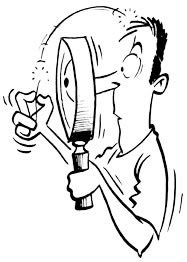Control Quality vs Validate Scope
 Most PMP aspirants get confused between Control Quality and Validate Scope. If I had to list the top 5 most-confused topics for the PMP Exam, this topic would be on that list. This article aims to clear the confusion by bringing out on the key differences between the 2 processes and reinforcing the concepts with examples. I suggest that you refer to the PMBOK® Guide and a good PMP Exam Prep book or course material for a more comprehensive explanation of all the inputs, tools and techniques and outputs of these processes.
Most PMP aspirants get confused between Control Quality and Validate Scope. If I had to list the top 5 most-confused topics for the PMP Exam, this topic would be on that list. This article aims to clear the confusion by bringing out on the key differences between the 2 processes and reinforcing the concepts with examples. I suggest that you refer to the PMBOK® Guide and a good PMP Exam Prep book or course material for a more comprehensive explanation of all the inputs, tools and techniques and outputs of these processes.
What is the difference between Control Quality and Validate Scope?Permalink
Let's look at the 2 processes closely.
- Control Quality is about ensuring that the deliverables meet the quality requirements defined in the Quality Management plan. Validate Scope is about formalizing the acceptance of deliverables.
- Control Quality belongs to Project Quality Management knowledge area, whereas Validate Scope is under Project Scope Management.
- Control Quality is focused on correctness of the deliverables whereas Validate Scope is focused on acceptance of deliverables.
- Control Quality is usually done by the Quality Control department, whereas Validate Scope is done by customer or sponsor. In Validate Scope process, the project manager holds several meetings with the customer or sponsor to review the deliverables to ensure that the deliverables are completed satisfactorily.
- Control Quality is usually done before Validate Scope, but these processes can be performed in parallel.
- Validated deliverables, which are an output of Control Quality, are an input to Validate Scope. The output of Validate Scope are Accepted Deliverables.
- Both Control Quality and Validate Scope are done as part of Monitor and Control process group, but Validate Scope can also be done at the end of each project phase to validate the deliverables of each phase.
- Both Control Quality and Validate Scope processes can result in change requests.
Examples of Control Quality and Validate ScopePermalink
Take the example of IT Systems project. Code (or peer) review, Unit Test, System Test, Functional Test, Regression Test fall under Control Quality. User Acceptance Test falls under Validate Scope.
Let’s take another example to drive home the point. Suppose you want to get your house renovated. You hire a contractor for the job, provide all the requirements and sign the contract. Now as the contractor is doing the job, it is the contractor’s responsibility to ensure that the work or deliverables are meeting the quality standards established for the project. The contractor ensures that the floors are leveled, the paint is uniform, the electrical switches work, the locks work etc. This is an example of Control Quality.
As different sections of the house (such as the living room, bedrooms and kitchen) are getting complete, the contractor invites you to inspect the work and make sure it meets your requirements. This is an example of Validate Scope.
Let’s say when you inspect the first bedroom, you find that the paint finish on the wall is glossy, but you had requested matte finish. You discuss it with the contractor and the contractor agrees to fix it according to your requirements (change request). Now imagine what would have happened if you had waited until the whole house had been renovated, before making the inspection. It would have been a huge deal to repaint the entire house.
Think of Validate Scope as checkpoints during the course of the project to ensure that the project is on-track from the customer’s point of view. If you wait until the final acceptance of the project in the “Close Project” process, it might be too late to make any changes. The Validate Scope process reduces the project risk.
I hope you can appreciate the difference between Control Quality and Validate Scope better and see how they fit into Project Management.
Image credit: Flickr / blvesboy
34 Comments
Anonymous
Harwinder Singh
Sid
Brian E
hundi
NarasimhaSwamy
Anonymous
Anonymous
Harwinder Singh
Anonymous
Tanjore Doll
Harwinder Singh
Sir Chawlz
Harwinder Singh
Poorhouse Dad
Harwinder Singh
Mathan
Harwinder Singh
Anonymous
Anonymous
Anonymous
Anonymous
Thumbelina
Harwinder Singh
Anonymous
Anonymous
Harwinder Singh
Harwinder Singh
Anonymous
Harwinder Singh
Titan Mover
Falcon
Rahul Juneja
Avi